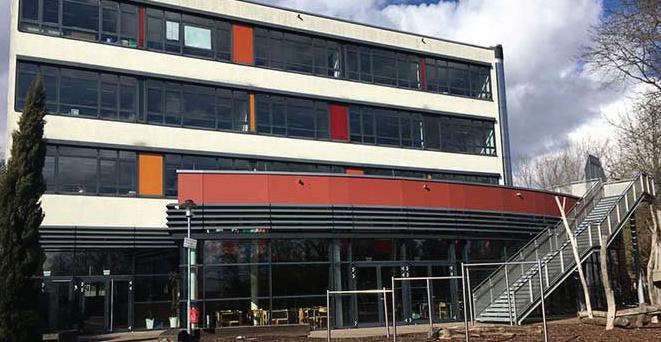
3 minute read
ISC Research - An Overview of the International Schools
ISC Research An Overview of the International Schools Market (May 2017-2018)
Kings College Frankfurt will open in September 2018 to respond to increased demand as a result of Brexit relocations. The International Schools Market The year ending May 2018 has been a dynamic one for the international schools market. Many new international schools have opened. The development of new schools has continued and is occurring in a broad range of countries. The sector of international schools accessible to Chinese nationals in China is expanding at pace with international schools opening in a growing number of China’s cities. The healthy yet static sector of the market within mainland Europe is now experiencing new demand and development interest for the first time in many years, in large part due to the impact of the United Kingdom withdrawing from the European Union. This has prompted several multi-nationals and London-based banks to plan for relocation which requires family infrastructure and, with that, the demand for school places. The improvement of economies in several South East Asian countries has also increased demand for alternative, quality education options from local families. It has been another challenging year for some international schools in the Middle East and South East Asia that were dependent on Western expatriates, whose benefit packages provided for premium international schooling for their children. Many expatriates, particularly those working in the oil and gas sector, have been repatriated, and those remaining have seen their generous remuneration packages trimmed down resulting in some children being moved to more affordable international schools. Although the children of the highest-paid expatriates and wealthy locals are filling some of the high-fee premium school places, most enrolment demand is now focused on the mid-price international schools that are affordable to the majority of professional expatriates and more affluent local families. This shift in the market is expected to continue. Universities that are actively marketing to international students are increasingly seeking out international school students for undergraduate degree enrolment. This is because of the rigorous academic standards and personal skills development that international schools deliver to their students, which prepares them for the requirements of higher education learning. The ISC Global Report for 2017-2018 provides a much more detailed analysis of the international school year and the market influences that will be impacting supply and demand in the near future.

International School Choice There has never been so much choice for international schools, with 9,484 international schools located around the world (ISC Research data from May 2018). The market has increased by 57.1% since 2010 when there were 6,034 international schools (a compound annual growth rate CAGR of 5.8%). The total income from tuition fees in the year May 2017-May 2018 is USD $48.1 billion and the world’s international schools market is employing 467,262 full-time teaching staff.
Today, some cities have an extensive choice of international schools for families. This graph shows the top cities based on the number of international schools:
With so much choice, it can be challenging for parents to select an international school for their child. An increasing number of schools are seeking accreditation as a route to differentiation and quality assurance. There are a range of accreditation options assessing different criteria and parents should take the time to understand what the accreditation means in order to make an informed choice. Currently 2,083 international schools are accredited, which is only 21.9% of the entire international schools market.

An increasing number of international schools, particularly those in competitive locations, will also benchmark to assess how they compare to other schools within their country or globally (depending on their evaluation priorities). This helps schools to identify ways to differentiate and remain competitive within the market. ISC Research produces bespoke benchmarking reports for competitive analysis of a range of criteria, from school fees, facilities and accreditation, to staff salaries and benefits.
Bilingual schools have experienced the most growth within the international schools market since 2010; increasing from 1,667 schools in 2010 to 3,056 in May 2018. The schools within this sector deliver part of the curriculum in the native language of the school location, and the rest of the learning in English.










